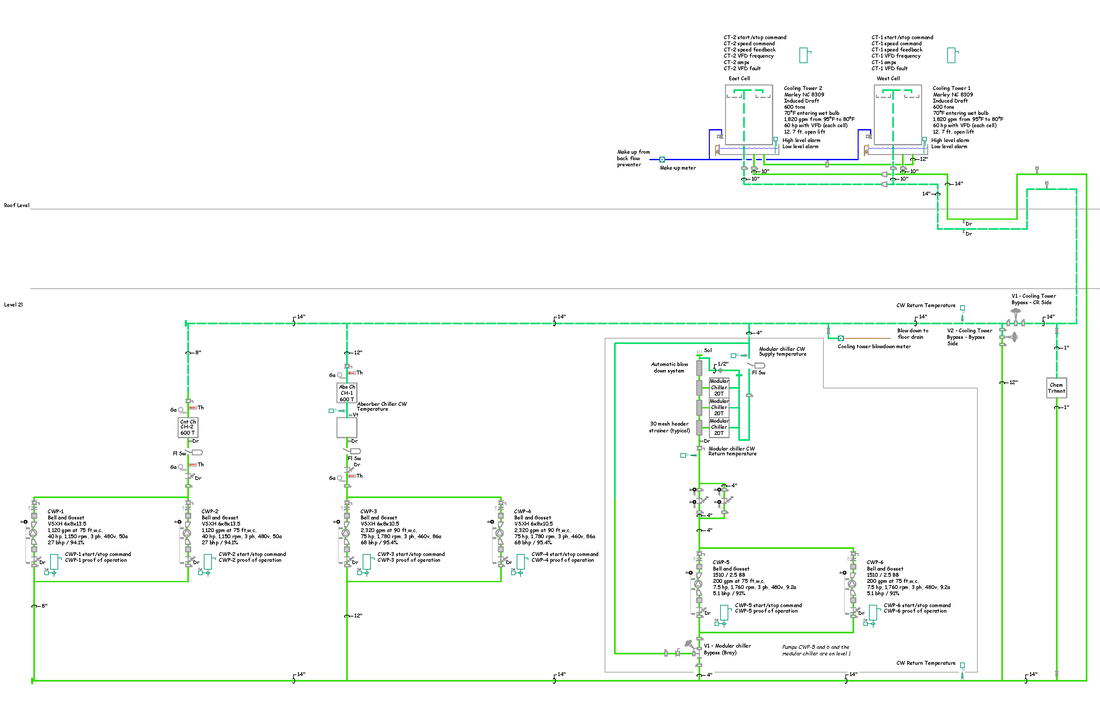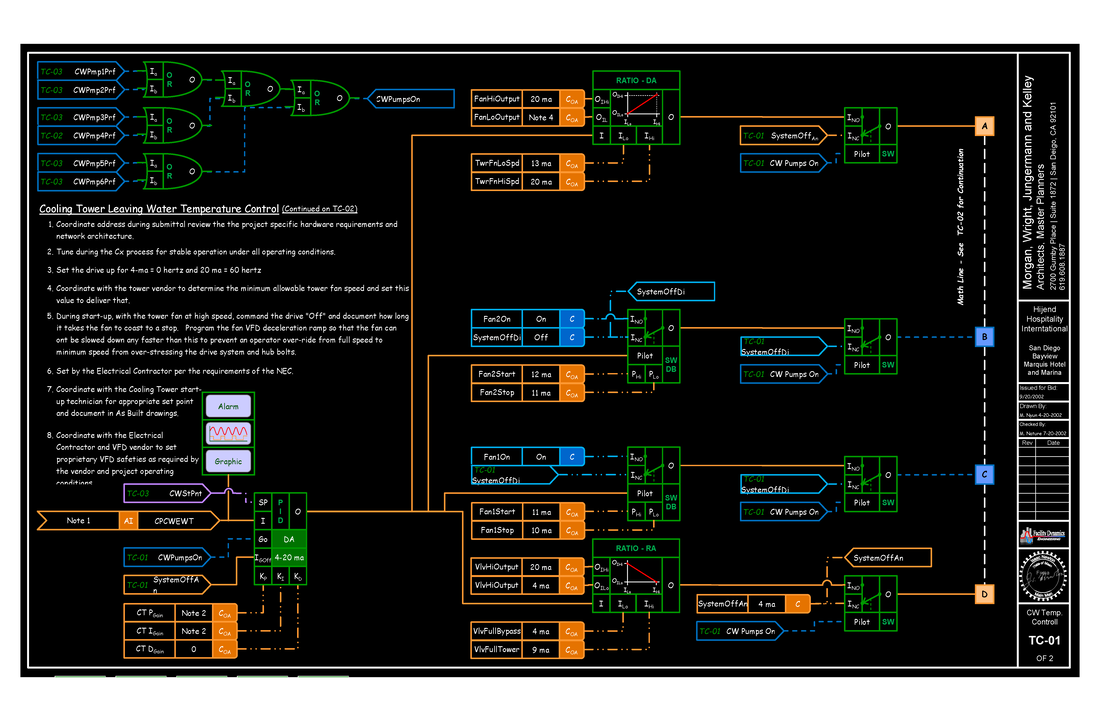2020 Columns
Data Logging Through the DecadesThis column looks at how data logging has evolved over the 40 plus years of my career and discusses the crucial role data logging plays to this day in supporting the operation of our facilities.
| |||
What to Consider When Designing for N + 1
|
This column looks at redundancy and discusses how you might need to think of it in broader terms than just having an extra prime mover. It includes a case study, which was essentially an on-the-fly ongoing Cx effort where considering the system, not just the prime mover led us to a solution to a problem that was costing us $20,000 - $30,000 a year in non-energy costs. The solution actually cost us a bit of energy, but it was a net win because it eliminated the other costs. And the other costs had implications in terms of embedded energy and other resources.
| |||
2021 Columns
It Really Is All About the Lags
|
This article looks at the impact of lags on a control process serving the cooling towers in a condenser water system, a lesson a originally learned by blowing up a duct (this link takes you to a discussion of that significant emotional event). The resources below provide a more detailed look at the system diagram and control logic I discuss vs. the simplified versions included in the actual article.
| |||
Detailed System Diagram
|
The files to the right are a more detailed version of the system diagram for the system discussed in the article. If you are interested in the concepts and techniques behind this type of diagram, you will find some resources, including a link to a string of "how to" blog posts on the System Diagram Symbols page of the website.
|
| ||
Detailed Logic Diagrams
|
The file to the right contains the detailed logic diagrams illustrated below in the form of an Excel based spreadsheet tool. You can find out more about the tool and download the current version and symbol list on the Logic Diagram Tool page of the website.
|
| ||
Option 1 Approach
Option 2 Approach
Pneumatic Diagrams
Pneumatic control diagrams provide a less intimidating way to look at control logic compared to DDC programming for some folks. And the reality is, there are existing buildings out there that still rely on pneumatic controls. So, I sketched up pneumatic diagrams for the two options for those who find them more approachable. You will also find a number of pneumatic control resources on the Pneumatic Control Resources page of the website.
Modeling Perfection
|
This article looks at a technique I used to identify EBCx opportunities by comparing data from a chilled water plant or a system it serves with theoretical lines of perfection. Generally, the data cloud should follow the lines and if it doesn't, there are often opportunities to improve performance and efficiency if you can identify the root cause of the deviation, which are often revealed by the location of the errant data relative to the lines of perfection.
| |||
We ran out of space in the article for this table illustrating the metrics behind the model used for Figure 2 so here they are.
The psych chart illustrates the analysis technique I use to fine tune dry bulb economizer change-over settings to a particular climate and load, which I mention at one point in the article. You will find a description of how to do the analysis in Chapter - 3 - Economizer and Mixed Air - Paragraph 3.5.6.1. Outdoor Temperature Based Interlock of the Air Handling System Reference Guide that is included as part of the Functional Testing Guide package.
|
If you are interested interested in the actual spreadsheet behind the Perfect Chilled Water Load model, which includes a higher resolution version of the image above, you can download it using the link to the right.
|
| ||
2022 Columns
The Perfect Economizer
|
This column explores a technique I use that is similar to the technique discussed in Modeling Perfection to assess economizer performance. If I have done a good job in the column, you should be able to build yourself a copy of the tool in Excel or some other application.
But if you want a head-start on it, the Excel file below is the file behind the illustrations in the article, which are simply Excel charts that plot outdoor air temperature vs. mixed air temperature lines based on the inflection points associated with economizer operation.
| |||||
The files below are associated with a letter to the editor that I received regarding this column and are referenced in a blog post I did that discusses the psychrometric process that the author of the letter asked about.
|
| ||||
TMI About TMY
|
This column explores where the weather data files we typically use for our energy projections come from.
The spreadsheets below are referenced in the column and contrast different data types for the locations indicated.
| |||||||||||||
|
This file contains higher resolution images of the figures.
|
| ||
These links will take you to some of the weather data resources behind the spreadsheet and discussions in the article.
2024 Columns
Net Positive Suction Head - Part 1
|
Net Positive Suction Head (NPSH) is a complex concept to understand. But understanding it is crucial in terms of avoiding pump cavitation problems, especially for open systems like condenser water systems. This article is the first of two parts where I use a field experience with a NPSH issue as a case study to explore the concept.
This first part explores the differences and relationships between NPSH Required (NPSHr) which is a characteristic of the pump and NPSH Available (NPSHa), which is a characteristic of the system. |
|
| ||||
The chart is a visual I created to support my explanation in the article. The spreadsheet file above is behind it and you can download it if you want to play with it a bit or use it as a tool.
|
I also created a virtual tour of the case study site that lets you see the issues hear the cavitation at the pump that resulted. The image to the left is the opening view.
You can take the tour by following this link. When the tour opens there will be some instructions in a window that you can toggle of and on that explain how to navigate through the tour. |
















